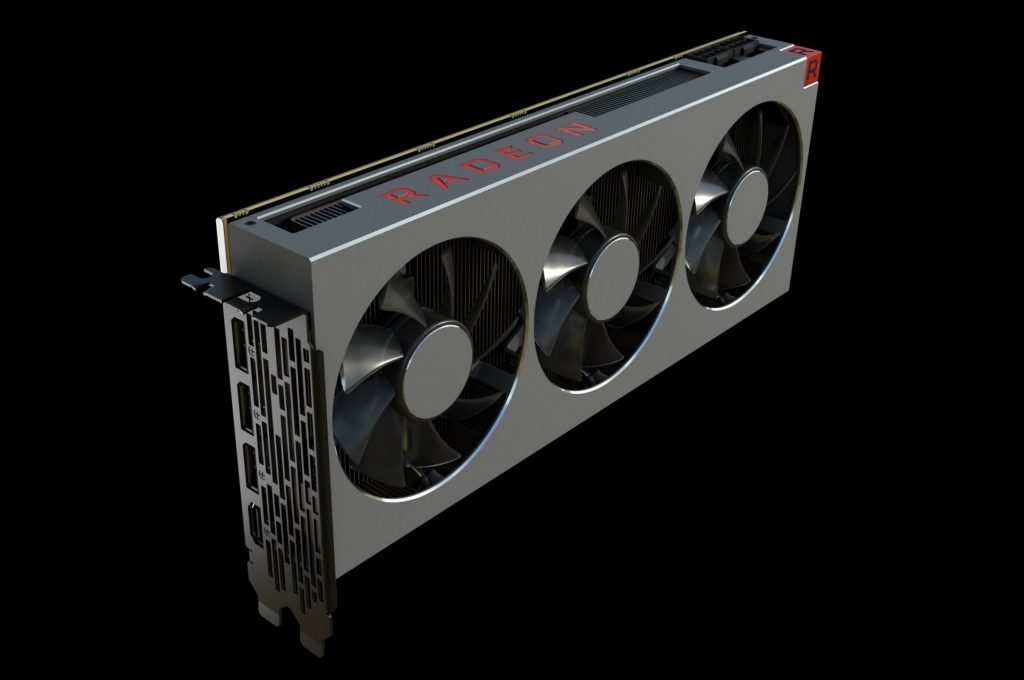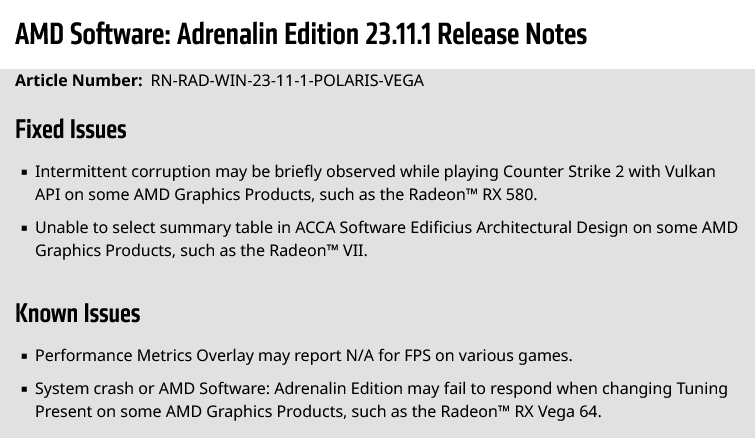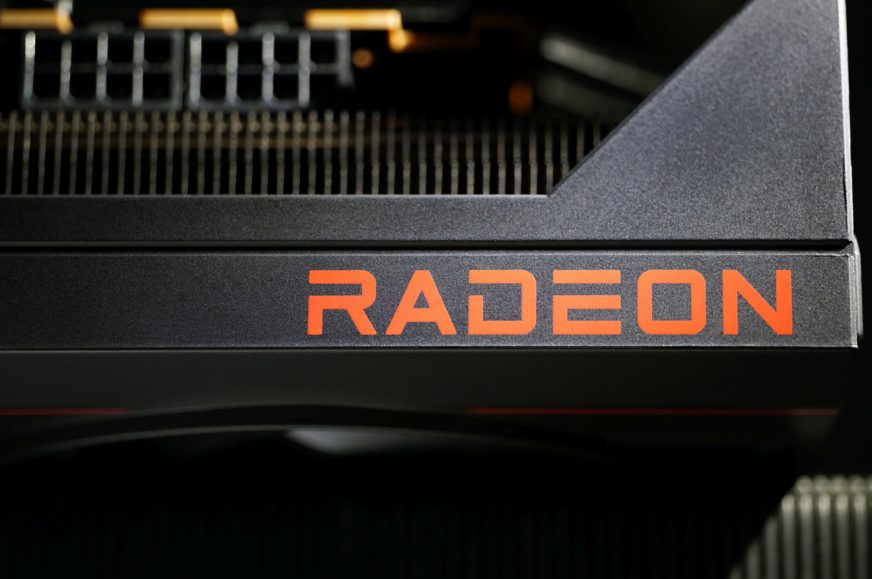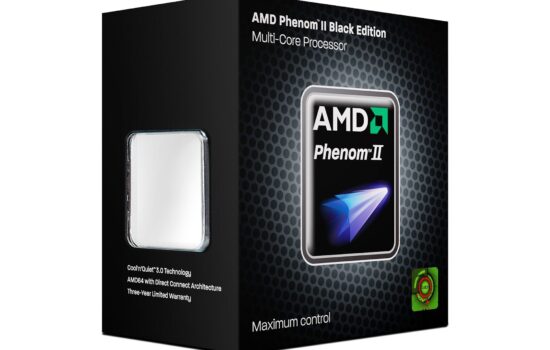Polaris and Vega architectures no longer supported in the main Radeon driver, they have a separate legacy release
Recently, it has been reported that AMD may be preparing to discontinue driver support for older Radeon graphics cards with Polaris and Vega architectures (pre-RDNA cards based on GCN lineage). AMD has now released the first new version of drivers for these graphics cards in two months, so it seems that the full end of updates for them is not yet here, but at the same time it is confirmed that support for them is moving to the back burner.
At the start of the month the AMD Software Adrenalin Edition 23.11.1 driver was published, but it has two different versions. The default one supports Radeon RX 5000, 6000 and 7000 series (and corresponding Ryzen APUs with integrated RDNA 2 or 3 graphics). But alongside this, AMD’s site also offers a separate driver for Radeon RX 400, 500, Radeon Pro Duo, Radeon RX Vega and Radeon VII, plus Ryzen processors with integrated graphics base on these generations (i.e. all APUs up to Ryzen 5000).
These drivers for older graphics cards are apparently a different branch of code. According to VideoCardz, the standard driver has an internal version number of 23.20.23.01, while the one for older cards is 23.19.05.01 and “polaris-vega” is even listed at the end of the URL for that driver version. Quite possibly, a new branch of code may have been created from which GCN architecture support was removed for easier maintenance and further development. A separate branch was then created for older graphics cards, branching off from the code before this change, into which new security fixes, for example, will probably be ported and any issues affecting only older GPUs will be addressed specifically in this branch.

This can be seen, for example, in how the release notes differ. The Polaris and Vega drivers do not list new features, only fixes and “known issues” (which means reported problems that were identified and may be fixed in future releases). On the other hand, the driver for the new RDNA GPUs adds support for new games (Call of Duty: Modern Warfare III, Like a Dragon Gaiden: The Man Who Erased His Name, The Invincible, JX3 Ultimate) or performance improvements in AI applications for RDNA 2 and RDNA 3 architecture graphics cards (should cover Stable Difussion, Adobe Lightroom, Da Vinci Resolve, UL Procyon AI benchmark). However, the listed bug fixes mentioned differ between the two branches, too.

For now, the dropping of Vega and Polaris graphics support is not complete and new drivers are still coming out. But it is clear that they will receive less care and volume of changes compared to the main line of drivers, which will cover the graphics cards of the RDNA line.
Going forward, it is also a question of how long AMD will continue to update this legacy driver branch with limited development and fixes and how frequent the releases will be. While it’s true that, for example, GPUs of older GCN architectures or even older VLIW (for which there have been no new drivers since basically the release of Windows 10) are still usable in office and similar low-demands environments, gaming is more sensitive to ongoing support and patches. So it would be good if limiting the amount of changes in this “legacy” branch would at least have the positive result of maintaining such support for longer…
Source: VideoCardz, AMD (1, 2)
English translation and edit by Jozef Dudáš
⠀











